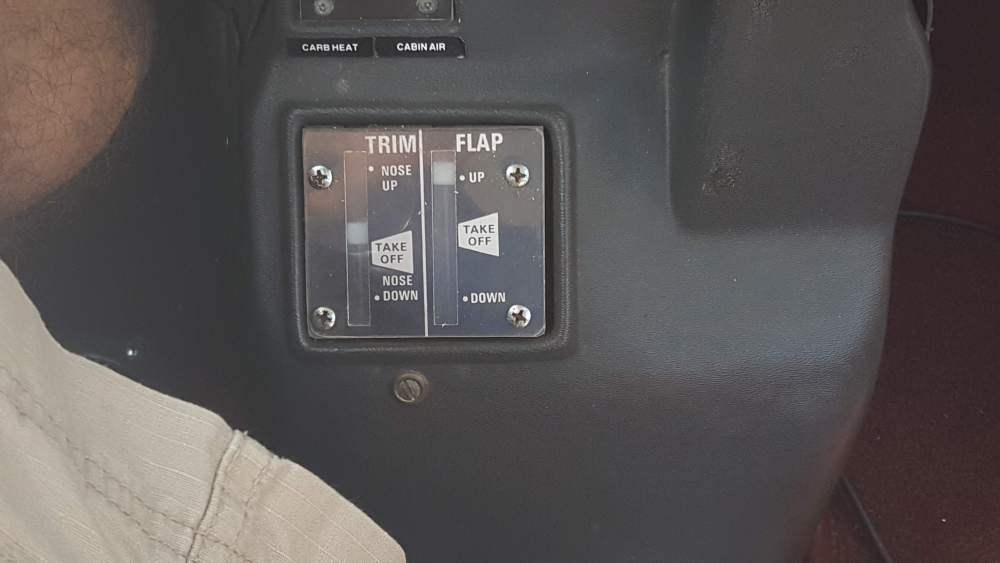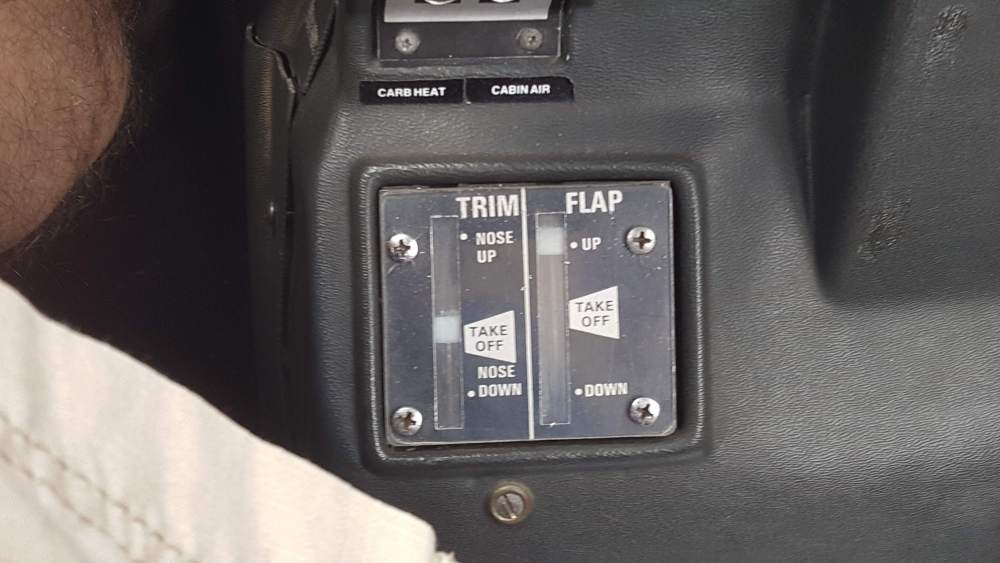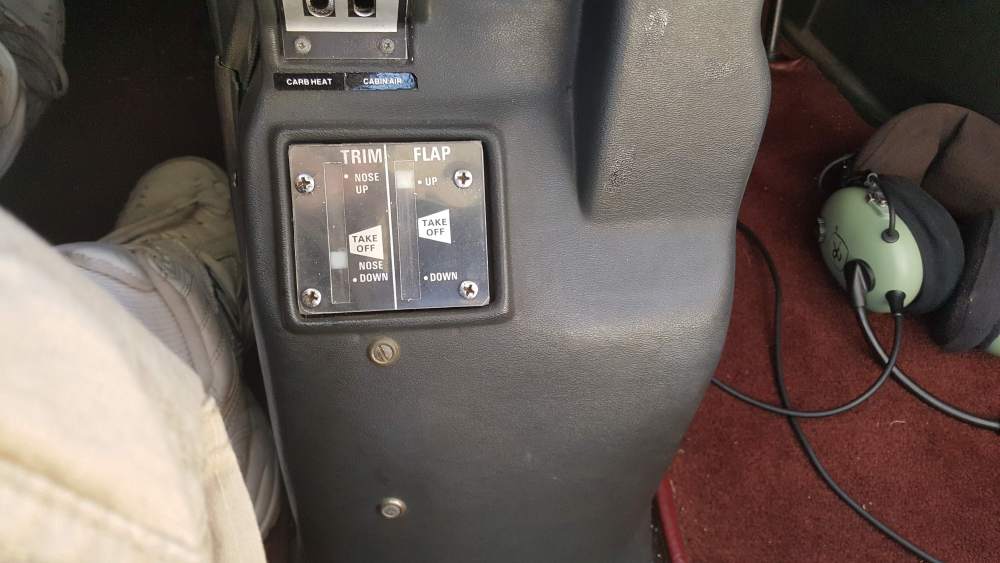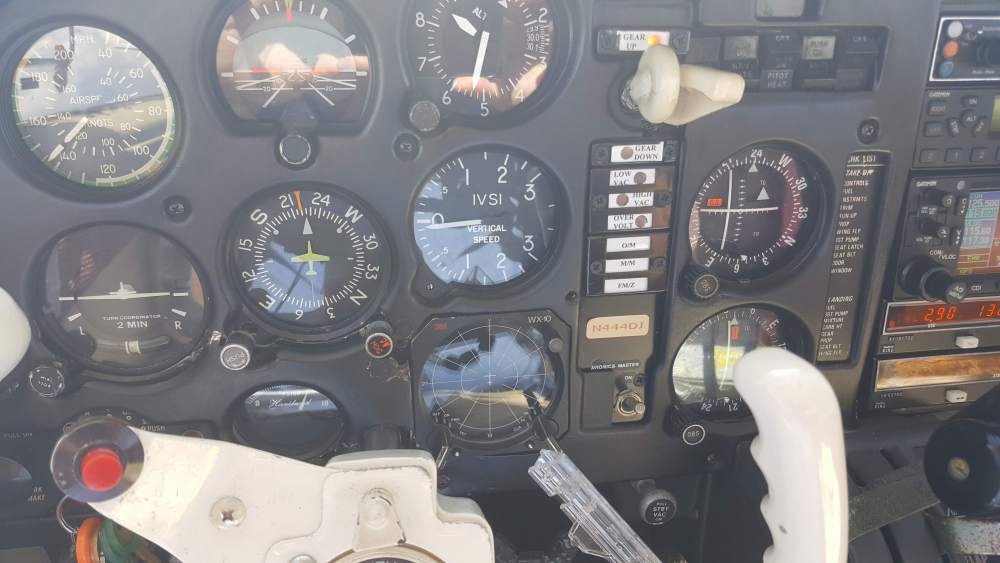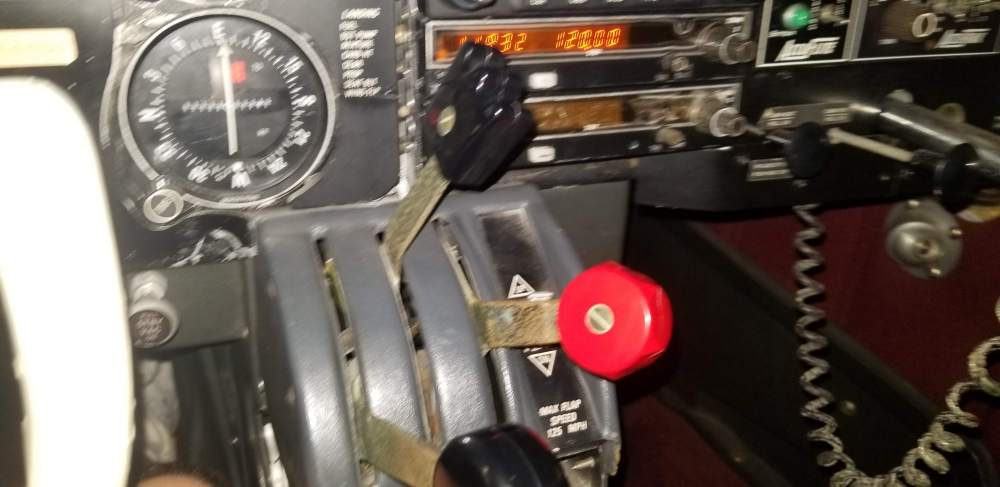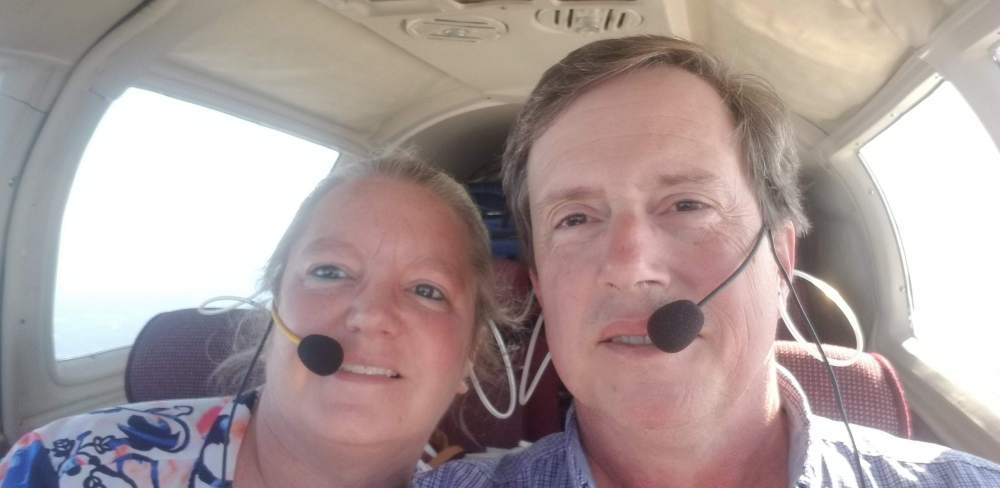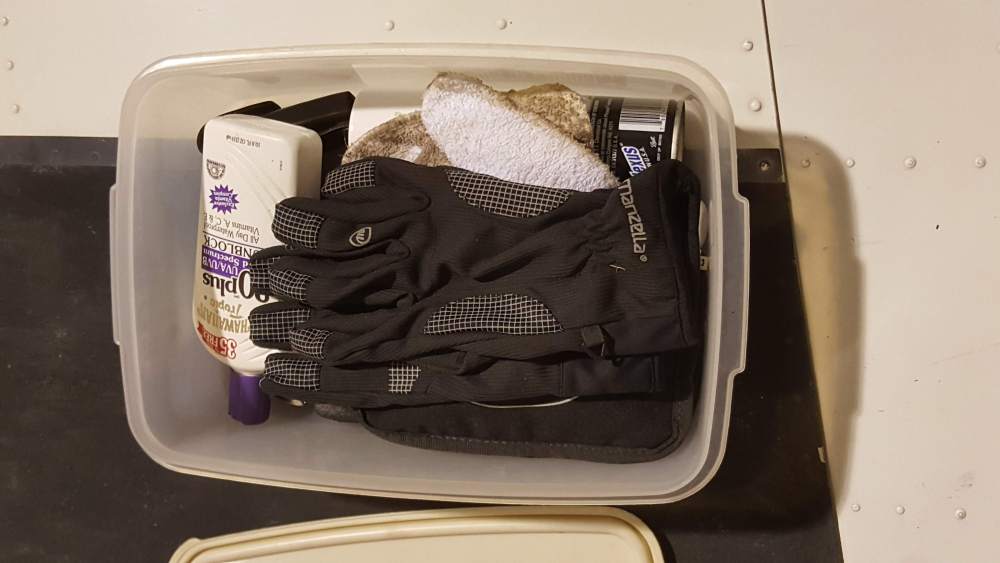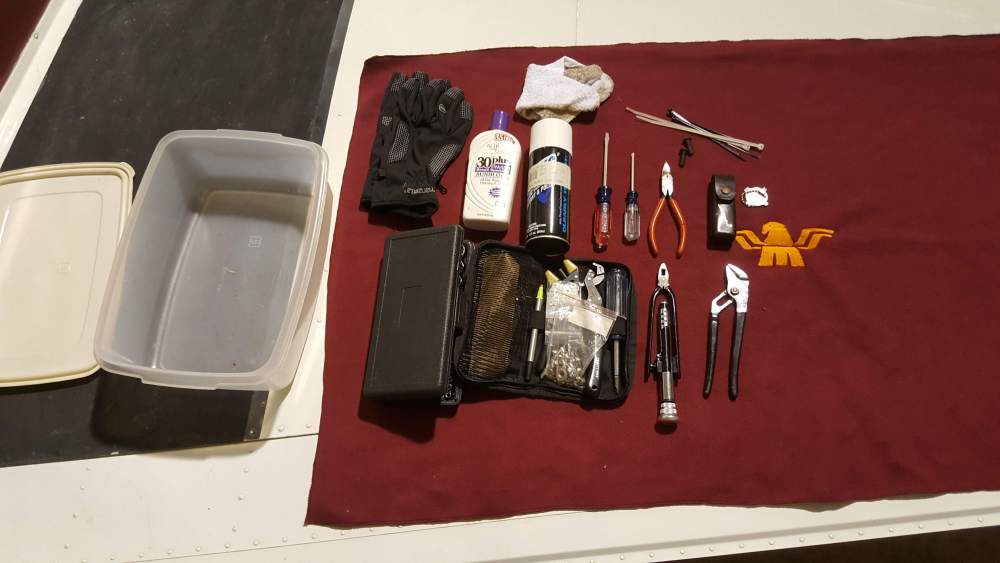-
Posts
20,149 -
Joined
-
Last visited
-
Days Won
123
Content Type
Profiles
Forums
Blogs
Gallery
Downloads
Events
Store
Everything posted by Hank
-
P.S.--with nearly full down trim in level cruise, you have a significant down thrust vector. Yanking the throttle to idle (or selectig a dead magneto) would theoretically create an upward vector, but we definitely experienced an immediate, strong downward motion of the nose. I'm really not trying to be difficult, just applying my Mechanical Engineering education and experience these last few decades to try to understand how idling the throttle creates an upward vector when climbing but a downward vector when cruising.
-
Most of my takeoffs are no flaps, unless I'm heavy or the field is short (like 2000'). Gear is stowed by treetop level, all that drag just slows the climb. From a previous discussion, here are pictures of my typical trim positions: Takeoff (not heavy): Climb: Cruise: Guess I forgot to get a descent trim picture. I still don't understand why pitch changes to maintain speed when the engine quits firing in cruise but not in climb? Unless you are pulling the yoke to climb instead of trimming? I'll try to remember to do this again going to Summit on Thursday. My wife can help me remember the descent part.
-
In level cruise at 170+mph True, I had a lot more i ertia than I do while climbing at 100 mph indicated. But my plane pitched down, rather strongly, immediately (made my wife scream). Why does it not do this when climbing? The only differences between your list and my experience is that I had much less upward pitch and much more inertia. That doesn't add up,mwith triple the inertia, mympitch change should be be slower than in low speed / low inertia situations.
-
One flight with my wife, I was having weird EGT readings. When it went above redline, I decided to do a mag check. We were in level cruise at 9500 msl, should have been indicating ~145 mph, ~21" / 2500. Ignition Left, engine stopped immediately, plane pitched strongly downward to maintain trimmed airspeed. Ignition Both, came right back on and leveled out. Ignition Right, kept on purring so I left it there and leaned it again. Learned a second lesson: don't surprise your wife like that! What creates the need to push on the yoke when this happens in the climb? You do trim for hands-off climb, right? Won't the nose still change pitch to maintain trimmed airspeed? Early in the climb, the trim may not be fully set, though. Is that all? What am I missing? P.S.--to me, "maneuvering speed" is Va, maximum turbulence penetration speed. MCA is a minimum speed that the FAA no linger requires a demonstration of, although on one flight review I flew my C like that for several minutes, stall horn blaring, changing course left and right as directed. I think the CFI was surprised . . . Now we don't do that anymore.
-

After Fire: A follow-up (we were lucky).
Hank replied to Bob E's topic in Vintage Mooneys (pre-J models)
I just generally push mixture Full Rich, pump throttle once to get fuel into the carb and turn the key. If it's not running in a couple of seconds, then I pump the throttle. It's worked well for 12 years, except when my SOS was on the fritz. Shouldn't take more than 4-5 seconds.- 8 replies
-
- fire
- overpriming
-
(and 1 more)
Tagged with:
-
My C has the same roller slider that's on the bottom of the door.
-
Glad to hear that the fancy electronic ignition akes yiur E as easy to start as my factory C. After fueling last night, I let go of the key too soon, so my entire done-it-wrong restart may have lasted 10 seconds; it's usually less. Hope to see everyone next weekend.
-
Most places have more fields within a Mooney hour than within a Cessna hour. During my transition, we visited most of them, which was a large variety of runways: flat, sloped, humped, dished, crooked, obstructed, clear, wide, narrow, etc. Great learning experience before being turned loose to travel! My first trip with PPL was KHTW-->KAVL, 200nm along the Appalachians in a no-GPS Cessna 172. Almost three months later, I took my wife to surprise her father on his birthday (because the drive was 9-10 hours), KHTW-->KFAY, 270 nm across the same hills. Flight time wasn't a whole lot different, but probably used less fuel. It was my second Charlie field, after my checkride at KCRW. Get a Mooney, go travel and have fun! Got IFR in it a couple of years later, after thoroughly learning the plane so that flying was second nature. And a little procrastination . . . .
-
Now that temps are coming down (for a few days anyway), it's time to get night current again. Didn't think to get a picture of the field until I was done--maybe next time. Calm and clear, just rolled to the end and took off the other way. Two downhill departures toward the lake, landing over town and the development along the 4-lane, and one uphill departure over town, landing uphill over the darkness by the lake. Winds were reported as calm, but at 1000' msl i had a 10° East correction in; flying south to land on 36 over the lake, it blew me pretty wide before I noticed (couldn't see any landmarks except those pretty lights on the field). Having forgotten aerial photos of the pretty lights, I did remember recent discussions about leaning on the ground and approximate mixture position. So while taxiing uphill towards the hangar, I took this picture. It's usually a little futher back, but this was uphill at about 1100 RPM.
-
That's what I do away from home. Otherwise I keep a funnel draining into an empty oil can. Takes a couple of years to accumulate enough drippings to be mostly windproof (about an inch).
-

Preventative Maintenance - maybe more than you think.
Hank replied to PT20J's topic in Miscellaneous Aviation Talk
Someone died in a Lear whose tire pressure was adjusted by a non-certifed person???? -
Just have to call before I go. Almost never go inside the veil or to Charlie fields anymore. When I went to Yellowstone (traveling for sure, 1320 nm each way from WV), didn't enter any of what will become ADS-B airspace. Almost never cruised above 10,000 msl the last 12 years--once comes to mind. Not paying 5AMU per flight surcharge . . .
-
I'm as equipped as I plan to be: Mode C is good enough. ATL finally let me into the Bravo (when I had already diverted 3/4 of the way around) for the first time in 5+ years of flying past. Since that's the only Regulation airspace that I frequent, and I am almost always denied entry, I'm not wasting my fuel / maintenance / upgrade money on ADS-B. Doggone ATL Bravo is so high and wide that it would require oxygen to go over, to say anything of my C's anemic climb rate going to 13,500 msl.
-
So my generic GE incandescent landing light has some sort of FAA approval, not indicated by packaging, labeling or package inserts??????
-
Really? Had no idea. My old clamp-o-matics were uncomfortable enough that I would have enjoyed that, but never did. Now we weat Halos--no pain, no discomfort, we sometimes forget we are wearing them. But getting out will remind you when they are snatched off your head!
-
There's no such statement, PMA or TsO certificate for my current incandescent bulb. Why do I need these things for one new bulb but not for another new bulb? And how do I as a mere owner know which new bulb needs all of this and which new bulb doesn't???
-
The last IA to work on my plane, responsible for my visit to Joey Cole to fix what he did, was absolutely shocked at how quickly and easily my C cranked up, and by how easily I was able to hot start it . . . . But he will never touch it again.
-
Amen, brother! I did spend two lazy years flying my Mooney around the country and over the Appalachians frequently before starting Instrument work. Great plane, great instructors, great fun!!
-
This is my on board toolbox, in addition to towbar, tiedown ropes, lightweight chocks as above, a quart of oil, fuel sump cups and dipstick: You'll need a small blanket for your wife (that's what the tools are spread on), and mechanic gloves if you live up north--that steel towbar is COLD in December!
-
My travel chocks are simply pieces of 2" x 2" aluminum angle I fished out of the machine shop trash can at work and bandsawed to the same length at home. A little file work to clean up the ends, drill holes for ropes that I haven't attached yet, and they both fit together in a Crown Royal bag back on the hatshelf. My tie down ropes are there, too--two pieces of 1/2 rope, with an eye splice on one and a simple end splice to reduce unraveling on the other end. simple, lightweight, works anywhere, took about a half hour to cut a 50' rope in three pieces, but I still haven't finished the tail tie down rope . . . Durn interruptions!
-
Slap a uAvionics tail strobe on to use while you research. Quick, easy, fairly inexpensive. Assuming they are OK in the Flight Levels.
-
What looks like 27 is also a good option, or 9 with a quick right departure [for the beach].
-
CAR 3
-
It's basic freshman engineering, a class called "statics" [versus "dynamics" when the plane is moving]. The short body planes use the nose gear knuckle for Zero; mid and long bodies adjust this location to account for fuselage stretching, so that Zero is in t he same location relative to the pilot seat. Distance from Zero for many things is given in the TCDS for your model. Multiply everything out, change signs on those things in front of Zero [engine changes, prop, oil, my battery on the firewall, etc] and add them up for total moment; divide by empty weight for Empty CG. Easy!
-
Yes, your car is much more complicafed than our M20-Cs, but they are also much simpler to operate. There's no descent planning, no redline speeds, the car itself manages the mixture but in the plane YOU do that, to slow your car just press on the brakes (try that in your Mooney, say to slow down before pattern entry or tomreqch flap speed after descent) . . . As with everything there are practices that work, there are commonly-accepted practices and there are best practices. The risks decrease with each of these improvements. But the choice is still left to the pilot. It's your money and sometimes it's your life. Training will often save some of both, although life is generally an all-or-nothing deal.


